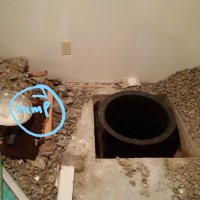CanadianSal
New Member
Based on feedback from the forum, there was a suggestion that a high water table might displace this basin once its put in place.
I took a look at the neighbour's setup, and he has a sump pump adjacent to the sewage pit.
So I am thinking I will do the same - as I have seen water rise and receed in this pit.
I am new to this - what would be the recommended approach - should I extend the current pit to also include a sump pump - or complete this one and cut a new hole AFTER I am finished with this one. Or Can I fit a sump pump in the current pit - outside the basin.
This is more a best practice suggestion. Appreciate your thoughts - I am guessing I will need to rent a jackhammer. Hopefully the kid at the homedepot has some wisdom on this.
I took a look at the neighbour's setup, and he has a sump pump adjacent to the sewage pit.
So I am thinking I will do the same - as I have seen water rise and receed in this pit.
I am new to this - what would be the recommended approach - should I extend the current pit to also include a sump pump - or complete this one and cut a new hole AFTER I am finished with this one. Or Can I fit a sump pump in the current pit - outside the basin.
This is more a best practice suggestion. Appreciate your thoughts - I am guessing I will need to rent a jackhammer. Hopefully the kid at the homedepot has some wisdom on this.


